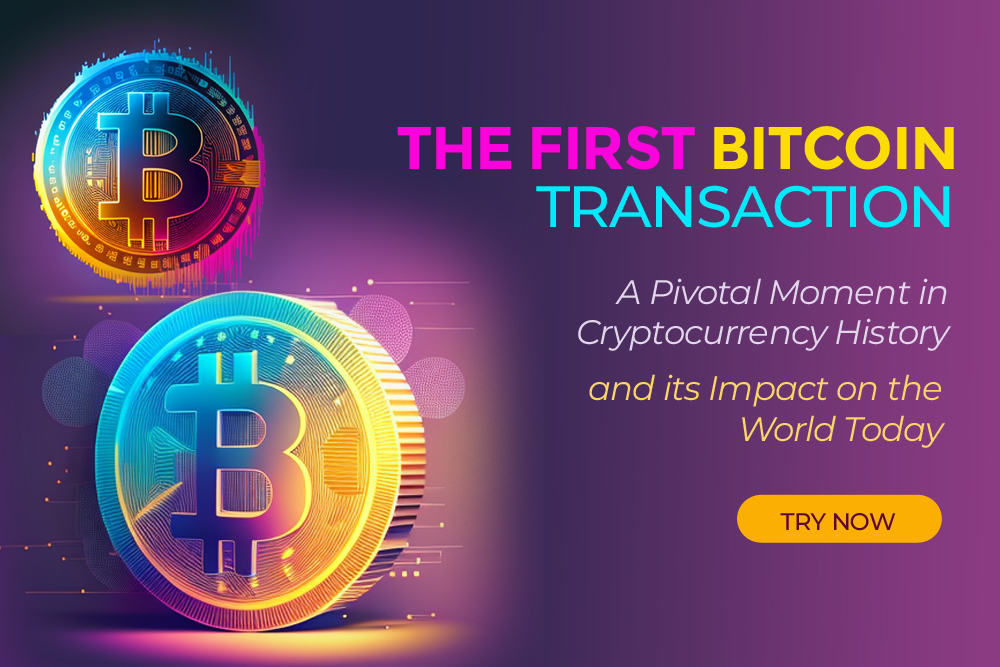
A revolutionary digital asset, Bitcoin has captured the attention of the world since its creation in 2009. One particularly noteworthy moment in its journey is the first ever Bitcoin transaction. On January 12, 2009, the creator of Bitcoin, Satoshi Nakamoto, sent a transaction to computer scientist and cryptographer, Hal Finney. This transaction marked the beginning of Bitcoin’s journey from being a digital asset with no real-world value to the widely accepted and valuable cryptocurrency it is today.
Hal Finney, the recipient of the first Bitcoin transaction from Satoshi Nakamoto, was an early Bitcoin enthusiast and developer. He was one of the first people to understand the potential of digital currency and was an active contributor to the development and testing of the Bitcoin software. He was an early adopter of the technology and supported the growth of the network. He was also the first person to run a bitcoin client on his computer and famously tweeted “Running bitcoin” on January 11th, 2009.
He was a pioneer in the field and was one of the first people to understand the potential of Bitcoin. He was also an active member of the cypherpunk community and was involved in the development and testing of the Bitcoin software.
In addition, Hal Finney’s tweet “running bitcoin” on January 11, 2009, is considered as one of the first public demonstrations of the software and it was a significant moment in the early days of Bitcoin. His tweet is considered as the first recorded evidence of the successful running of the software and the first recorded instance of Bitcoin mining.
Before this transaction, Bitcoin was used primarily as a digital asset, with no real-world value. Satoshi’s transaction to Hal marked the first time Bitcoin was used to transfer funds, and it marked a significant milestone in the cryptocurrency industry. It demonstrated the potential of Bitcoin as a medium of exchange and sparked the interest of many other early adopters. Hal Finney’s early involvement and support were essential in laying the foundation for the cryptocurrency’s success. He was a vocal advocate for Bitcoin and helped to promote its growth and adoption.
The first-ever Bitcoin purchase was made by a man named Laszlo Hanyecz on May 22, 2010, who bought two pizzas for 10,000 BTC. This transaction is now celebrated annually as ‘Bitcoin Pizza Day‘ by Bitcoin enthusiasts worldwide.
Since then, Bitcoin has grown in popularity, with millions of people around the world now using it as a means of exchange and store of value. The cryptocurrency industry has evolved significantly over the last decade and continues to grow at an unprecedented rate. The value of Bitcoin has gone from being worth a few cents to reaching an all-time high of over $60,000 per coin. It has also sparked the creation of thousands of other digital currencies, known as altcoins.
The growth of Bitcoin is still far from over. It has become a household name and has attracted the attention of investors, businesses, and governments worldwide. Bitcoin has also played a crucial role in the development of blockchain technology, which has the potential to revolutionise various industries.
Bitcoin’s journey so far has been nothing short of remarkable. From the first transaction sent by Satoshi Nakamoto to Hal Finney, to the widespread acceptance and adoption of the digital currency, Bitcoin has come a long way. The significance of that first transaction cannot be overstated; it was the start of a journey that has led to the creation of a new asset class and a new way of thinking about money.
The first Bitcoin transaction was a pivotal moment in the history of cryptocurrency. Hal Finney, the recipient of the first transaction, was one of the first people to understand the potential of Bitcoin.
Open your free digital wallet here to store your cryptocurrencies in a safe place.
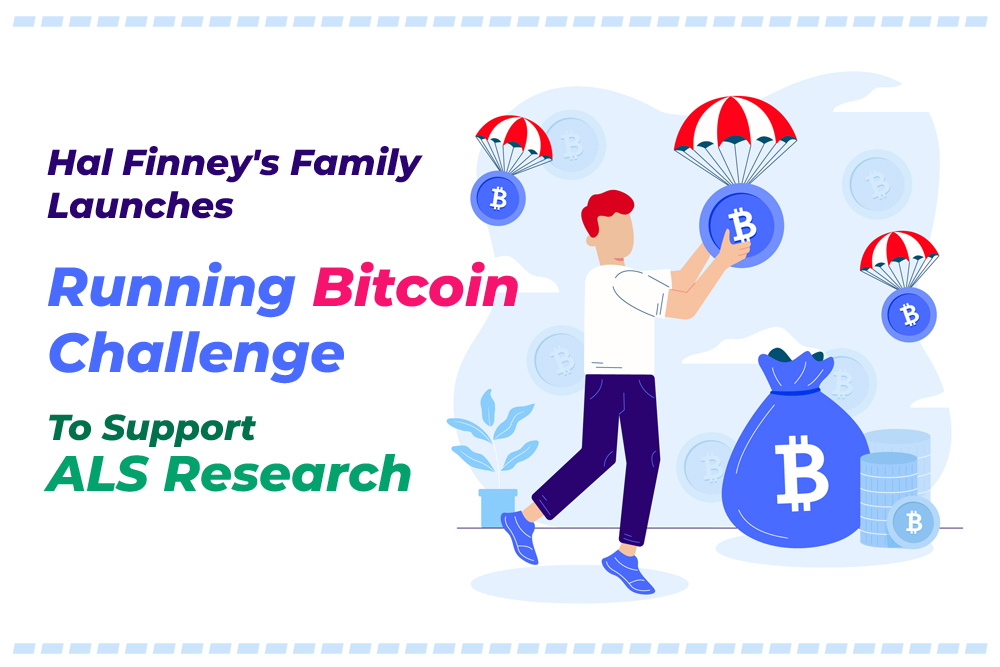
The Running Bitcoin Challenge: Honoring Hal Finney’s Memory and Supporting the Fight Against ALS
Hal Finney was a renowned computer scientist and cryptocurrency developer known for his contributions to the development of Bitcoin. In 2008, he received the first-ever Bitcoin transaction from Satoshi Nakamoto, the pseudonymous creator of Bitcoin. Tragically, Finney passed away in 2014 due to complications from Amyotrophic Lateral Sclerosis (ALS), also known as Lou Gehrig’s disease.
A Half Marathon Fundraiser for a Good Cause
In honor of Finney’s legacy, his spouse Fran Finney has organized the Running Bitcoin Challenge, a half marathon fundraiser that takes place between January 1 and January 10 each year. Finney was an avid runner before being diagnosed with ALS in August 2009. Despite a long battle with the disease, he was cryonically preserved in 2014. The Running Bitcoin event serves as a way to honor his memory and raise funds for an important cause. Those who donate at least $100 will receive an official Running Bitcoin T-shirt, and the top 25 fundraisers will receive a rare Hal Finney collectible.
The First Bitcoin Transaction and a Tweet That Changed the World
This timing coincides with the anniversary of Hal Finney’s famous “Running Bitcoin” tweet, in which he announced that he was contributing to the code to the Bitcoin codebase in 2008 and early 2009, and he was the recipient of the first-ever Bitcoin transaction, in which Satoshi Nakamoto sent him 10 BTC. Finney was a pioneer in the field of computer science and a strong advocate for privacy and civil liberties. His work in these areas continues to inspire others to fight for these values.
A Decentralized Event That Can Be Participated in From Anywhere
Participants in the Running Bitcoin Challenge can run, walk, roll, or hike the equivalent of a half marathon (Finney’s favorite distance) either in one go or over the entire 10-day period. There is no set location for the challenge, so participants can join from anywhere they wish. Those who donate at least $100 will receive an official shirt with the half marathon’s logo, and the top 25 fundraisers will receive a Hal Finney collectible signed by his wife. The Running Bitcoin Challenge serves as a way to honor Finney’s memory and raise funds for the important cause of finding a cure for ALS.
The Running Bitcoin Challenge has been a successful fundraiser, raising hundreds of thousands of dollars for ALS research. In addition to supporting research, the challenge also serves as a way for people to honor Finney’s memory and pay tribute to his contributions to the world of cryptocurrency.
Support the Cause and Honor Hal Finney’s Memory
By participating in the Running Bitcoin Challenge and raising funds for ALS research, individuals can help make a difference in the fight against this devastating disease and honor Finney’s memory at the same time. The event is being held in cooperation with the ALS Association Golden West Chapter, which provides equipment loans and educational materials to people living with ALS.
One of the unique aspects of the Running Bitcoin Challenge is that it is a decentralized event, meaning that it can be participated in from anywhere in the world. This makes it accessible to people from all walks of life and allows for a diverse group of participants to come together in support of the cause.
Overall, the Running Bitcoin Challenge is a unique and meaningful way to honor the memory of Hal Finney and support the fight against ALS. It is an opportunity for the cryptocurrency community to come together and make a difference in the world.
Open your free digital wallet here to store your cryptocurrencies in a safe place.
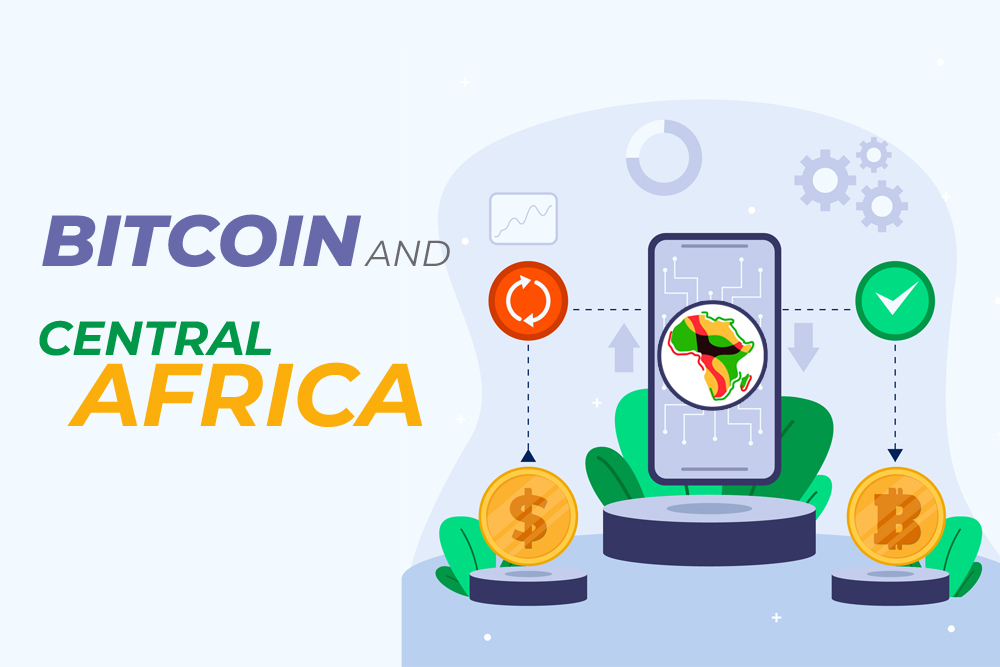
Bitcoin, the world’s first decentralized digital currency, has seen growing adoption in Central Africa in recent years. This trend is driven by a number of factors, including the region’s high inflation rates, political instability, and lack of access to traditional banking services.
One of the main reasons for the adoption of Bitcoin in Central Africa is the high inflation rates that many countries in the region face. Inflation erodes the purchasing power of a currency, making it difficult for people to save and plan for the future. By using Bitcoin, which is not subject to inflation, individuals and businesses in Central Africa can protect their wealth and preserve its value over time.
Political instability is another factor driving the adoption of Bitcoin in Central Africa. Many countries in the region have a history of coups, civil wars, and political unrest, which can lead to the confiscation of assets and bank accounts. By using Bitcoin, which is decentralized and not controlled by any government or institution, individuals and businesses in Central Africa can protect their assets from seizure and avoid the risks associated with political instability.
In addition to high inflation and political instability, many people in Central Africa lack access to traditional banking services. In some rural areas, there are no banks or financial institutions, making it difficult for individuals and businesses to access credit, save money, and make payments. By using Bitcoin, which can be easily accessed and used with a smartphone and internet connection, people in Central Africa can enjoy many of the same benefits of traditional banking without the need for physical infrastructure.
The adoption of Bitcoin in Central Africa is also supported by a growing ecosystem of businesses and services that accept the cryptocurrency. This includes merchants who accept Bitcoin for goods and services, as well as exchanges and wallet providers that facilitate the buying and selling of Bitcoin. This ecosystem is helping to drive the adoption of Bitcoin and is making it easier for people in Central Africa to use the cryptocurrency in their daily lives.
In addition to the factors mentioned above, there are several other reasons why Bitcoin is gaining popularity in Central Africa. The increasing use of mobile phones and internet access in the region has made it easier for people to use Bitcoin and other digital currencies. The growing awareness of the benefits of Bitcoin, such as its decentralized nature, low transaction fees, and fast transaction times, has also contributed to its increasing popularity in the region. The growing adoption of Bitcoin in other parts of the world has also played a role in its acceptance in Central Africa.
Furthermore, the Central African Republic has recently unveiled its own cryptocurrency, Sango Coin, which will be the second cryptocurrency, after Bitcoin, to be recognized as legal tender in the country. The President of the Central African Republic has voiced support for blockchain, cryptocurrencies, and Bitcoin, further demonstrating the increasing interest and involvement in the cryptocurrency space in the region.
Overall, the adoption of Bitcoin in Central Africa is driven by a combination of economic, political, and technological factors. As the ecosystem of businesses and services that accept Bitcoin continues to grow, it is likely that the adoption of the cryptocurrency will continue to increase in Central Africa.
Open your free digital wallet here to store your cryptocurrencies in a safe place.
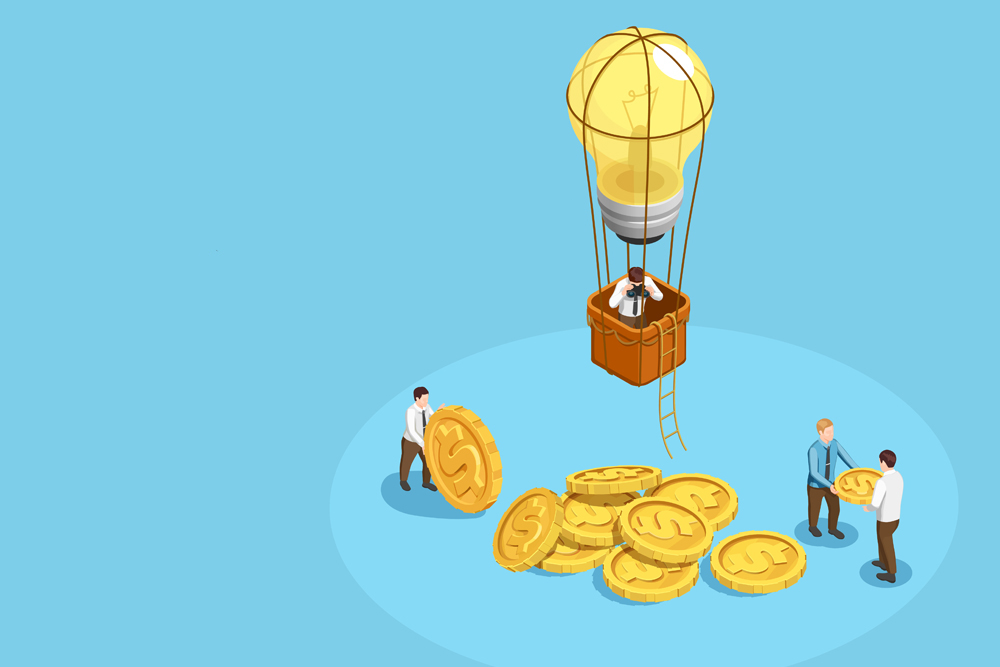
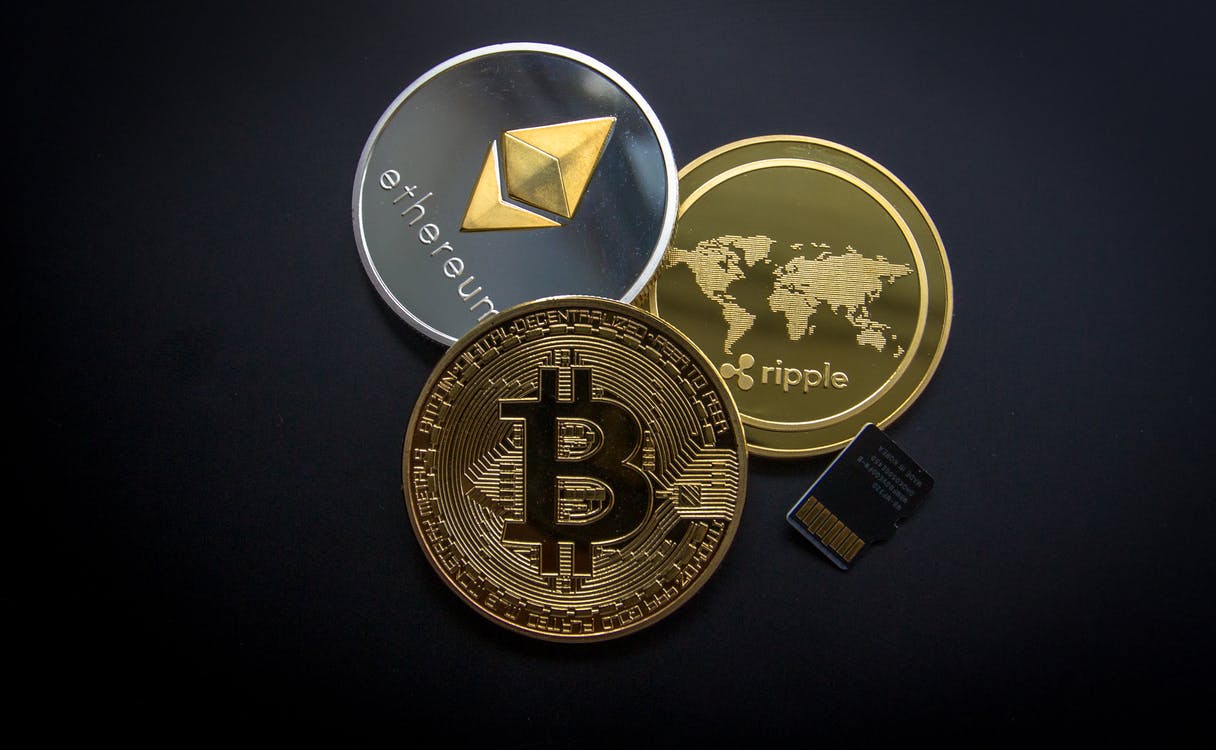
Cryptocurrency users are still a small minority. The total number of users was at 106 million as of January 2021. That sounds like a lot, but when you consider a global population that is nearing 8 billion, you can see that it is just a tiny fraction of people using crypto.
Whether you are in crypto or not, it is going to have an increasing effect on business. You can see Bitcoin mining operations selling shares on stock exchanges, large businesses looking into uses for crypto coins, and more people taking an interest in buying and using cryptocurrency.
At the current trend, crypto coins are becoming more common every year. If it holds, it might not be a matter of if people start using different cryptocurrencies, it could just be a question of when.
In the digital age, businesses are now connected internationally like they never before. Beyond the large multinationals, it is increasingly becoming common for smaller businesses to have significant international connections. This is not only true as it concerns deals with other companies, but businesses now have employees or contractors they work with from around the world.
Using cryptocurrency as a medium of exchange for international transactions could solve a lot of problems for these businesses. First, cryptocurrency could ease the burden of having to convert currency for several different countries. Beyond that, it could also make transactions faster, cheaper and more convenient by cutting out the traditional middlemen that would typically be in the middle of these transactions.
One of the factors that have held back many cryptocurrency markets is the lack of support from mainstream institutions. Banks wouldn’t let you make transactions with crypto exchanges, and it was hard to find businesses that would allow you to use your cryptocurrency. This is changing rapidly.
Beyond the ability of investors to use an ultra fast trading app to make trades, we now see a range of big institutional investors buying cryptocurrency. Along with that, some of the world’s largest financial businesses are starting to work with crypto. As an example, PayPal started offering a range of cryptocurrency services earlier this year. You also have major credit card companies that are starting to work with crypto on a limited level.
One of the main claims of many crypto skeptics is that the coins have no inherent value. This is true in a sense. The value of most crypto coins is solely based on the perception of people in the market. While that might be true, you could make the same argument for most fiat currencies. The value is based on the fact that people will accept it in exchange for goods and services.
Crypto has an advantage over many fiat currencies: the fact that many crypto coins have a limited supply. As inflation acts on fiat currencies, crypto could grow in popularity as a hedge. In the future, many investors will hold crypto in the way that they hold gold as a protection against inflation.
Raising or distributing equity usually means creating conventional shares of the business. While this could be a way to raise money or provide value to employees, it does come with a range of hurdles. One way to get around many of these hurdles would be to create crypto coins that represent shares in the company.
Instead of jumping through all of the regulatory hoops to issue shares, the business could give people crypto coins as equity. Instead of holding an IPO, the business could do an ICO as a way to raise capital from investors.
With the rise in crowdfunding platforms, the ability to raise money is easier than it ever has been. These platforms not only make it easy to raise money from the public, but they also offer a level of transparency that is popular among those looking to donate or invest. With that said, these platforms often take a significant portion of the funds in fees.
Using a blockchain wallet for crowdfunding could be a way to get the transparency of a crowdfunding platform while avoiding the fees. This would allow those looking to raise funds to do so off a platform, but with the blockchain ledger, potential donors or investors could still see the donations coming in.
Crypto is a field that is always evolving. As businesses see the benefits and new applications become available, it will become more common. With that said, the markets are unpredictable. The only thing that we can be sure of is that there will be ups and downs along the way.
Open your free digital wallet here to store your cryptocurrencies in a safe place.
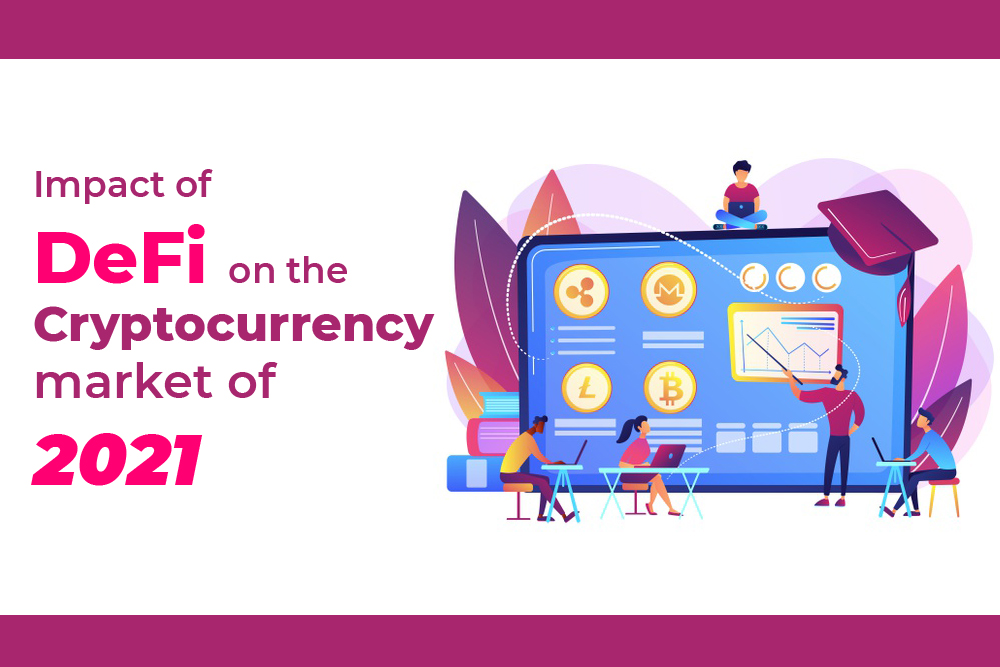
Short for decentralized finance, DeFi is a new wave taking over the world’s financial market; the cryptocurrency world. DeFi is the conception that entrepreneurs can provide traditional financial institutions functions through a decentralized medium. There are cryptocurrencies like Bitcoin and Ethereum, the former of which has been causing significant ripples in the crypto-world since the last quarter of 2020 and the beginning of this year.
Although Bitcoin and Ethereum are the forerunners of DeFi, newer and somewhat better altcoins are coming into view. An example is Dai, a bitcoin-resembling digital token that hopes to remain independent of the world’s central banks’ influence. Unlike centralized finance and traditional banks, DeFi takes away all the cumbersome operations, go-betweens, and high costs often involved. This it does via smart contracts and to the benefit of the end-user. The closure of many industries during this era of the COVID-19 pandemic has served as a wake-up call to consumers of fiat currencies on the futility and loss of value of such coins.
This wake-up call has been occurring in places where the government has been pumping more money into their economies even though they have taxes to be paid. Such practices make the value of such currencies questionable. As a result of such act, fiat currencies’ values have been seen to fluctuate and fall considerably, often leading to inflation. An example is in Venezuela’s economy where inflation has risen by more than 1,000,000% due to the influx and pumping of more bills into the economy.
Often, the influx of newly minted bills into the economy does not mean these bills will get to such currencies’ end-users. These often serve as injections into the banking sector. But when they come as benefit checks and government aids, this inflation in money supply results in taxes. Also, they help boost the stock market and the stocks of the top 1%, rather than help the thousands and millions of individuals and businesses that need such aids.
The increasing dissatisfaction and discontent with traditional banks and centralized financial systems are momentous. The high availability of information about the growing offers in the crypto sector is finally providing people with better alternatives to traditional banks. These alternatives come in the form of DeFi (decentralized finance) where people can now take part in a mode of operation that will work for them. This means that people’s money will now work for them instead of the other way round.
Investing in the cryptocurrency market is becoming more comfortable and more widespread than when it first emerged with Bitcoin as its forerunner. As the first DeFi system, this paved the way for other altcoins, including Ethereum, Tether, Polkadot, XRP, and Cardano. These cryptocurrencies have come a long way and have become potential collaterals when taking out traditional bank loans. These loans can be collected regardless of what your credit score is. They serve as a way of getting cash when you need it irrespective of the availability of physical collateral.
The influence of cryptocurrency is rising steadily in developing countries where inflations often caused by government policies and central bank cash injections result in the loss of value of people’s savings and business capitals. Buying and investing in DeFi systems has provided a remedy to that, whereby the value of fiat currencies that have been converted to cryptocurrencies experience growth and provide means of decentralized financial transactions with relatively low costs from traditional banks.
The opportunities created by cryptos seem even better in developed countries. Large amounts of money are readily available and can be invested in trusted cryptosystems where stable profit and immense gain are assured. This steady return has been made evident in Bitcoin and Bitcoin price prediction, which has been steadily increasing more than fiat currencies. Its independence from centralized financial systems has served as a contributing factor rather than a deterring factor.
Amidst the use of DeFi systems by individuals and some businesses, there is a need to increase its development and efficiency to encourage its adoption by institutions. Through this, the DeFi industry will rise from the position now as a Billion-dollar transaction pathway to a trillion-dollar one, where the costs of transactions go down while profits and investment increase. This aim of getting institutions into the DeFi industry is already in motion. Individuals and groups are coming together to develop decentralized financial apps that are better and more decentralized than their forerunner. Such a better DeFi system could come in the form of large and small security circles where a single user cannot overturn the currency’s stability, and a central body cannot determine a price change.
With this growth in the use of DeFi systems and the coming in of institutions into the crypto market, real-world assets can be brought into the blockchain, which will help and promote the growth of DeFi. This would include transferring trillions of fiat currencies and precious stones such as gold or silver onto the blockchain. And their movement can be done at the cost of no more than a nickel and no intermediary fees and liquidity limits. With DeFi as an alternative to centralized financial systems, governments will have little to no control over the wealth that cannot be generated by individuals that make use of the system.
With the growth of decentralized financial systems in the last two decades, the move from fiat currencies to cryptocurrencies seems irreversible. And that’s a good thing since, through DeFi systems, the distribution of wealth among crypto-users can be regularized and stabilized. This would ensure equal wealth distribution on the platform, which can only be influenced by cryptocurrency owners when they invest more fiat currency into the platform.
BIO John Edwards
John Edwards is a writing specialist who works at The Writing Judge. He is looking for ways of self-development in the field of writing and blogging. New horizons in his beloved business always attract with their varieties of opportunities. Therefore, it is so important for him to do the writing.
Open your free digital wallet here to store your cryptocurrencies in a safe place.
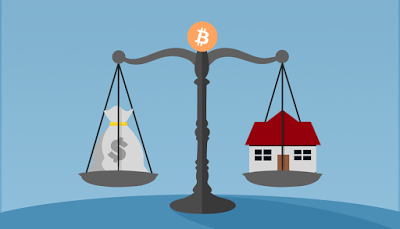
The world’s financial institutions are currently observing a vast digital ecosystem being expanded with reports for new digital currencies akin to the likes of cryptocurrencies to be launched soon. While these CBDCs (central bank digital currencies) are proclaimed not to harm or replace cash and other forms of legal tenders, we cannot help but talk about the ones instigating the change.
Cryptocurrency became popular since the launch of Bitcoin back in Jan 3rd, 2009. Ever since then, cryptocurrencies have seen a rise in popularity amongst the masses.
According to a recent study by Tech Jury, the cryptocurrency market cap has reached $265.545 billion as of May 2020. By 2023, the global blockchain market is expected to reach $23.3 billion. Furthermore, Bitcoin alone accounts for $6 billion of daily online transactions.
Moreover, cryptocurrency users have exceeded 40 million globally. In light, of this information, let’s take a quick look at how Millennials compare to Generation X when it comes to adopting cryptocurrencies.
Generation X is widely regarded as the generation that followed Baby Boomers and preceded Millennials. Their age groups range from 40 to 55 years old as of 2020. Here is how Generation X is reacting towards cryptocurrency:
While Millennials are regarded as the prime suspects for capitalizing on the crypto market, surprisingly both Baby Boomers and Gen X are being currently observed to closely follow the trends.
Hence in recent years, many sources have cited an increase in investment of cryptocurrency as both Boomers and Generation X take charge to close the gap. In some cases, they were also found to have more than doubled their investments.
It seems like the word of mouth and awareness about cryptocurrency is spreading like wildfire as Generation X is seen to understand the value and find blockchain as a reliable security measure. Understanding the benefits of fast and instantaneous transactions, the group of disaffected people and entrepreneurs is already showing signs of crypto is affecting their thinking for the future.
Reports are coming in, showing an evident increase and Month on Month growth patterns. According to a study by Mode Banking, both Baby Boomers and Gen-X have shown a trend of increasing their investment in cryptocurrency by over 100%, especially during the COVID-19 pandemic.
With the current economy ridiculed by the pandemic, the growing fear for wealth protection has led Baby Boomers and those belonging from Gen-X to invest in resources that can allow for asset diversification. Cryptocurrency so far has been observed as the most favorable type of investment to safeguard personal wealth.
Otherwise known as Millennials, Generation Y is widely regarded as the generation succeeding Gen-X and Baby Boomers. Their age groups range from 24 to 39 years of age. Often regarded as the parents of Generation Alpha (like my darling son!) they were born into a world that as quickly becoming familiarized with the internet, mobile devices, and social media.
Millennials view of cryptocurrency is that of an alternative asset. Surprisingly not many of us want to invest in stocks and are more interested in assets that are backed by technologies. According to a recent study by Coin Telegraph, Millennials are three times more likely to invest in cryptocurrency as compared to Generation X. Furthermore, 9% of Millennials chose crypto as their long-term investment option.
Students applying for and seeking dissertation assistance are also looking for ways to invest alternative asset that can help secure their personal wealth for the future. It is important to note here that while both real estate and stocks are also good options for Millennials, they are currently dominated by Baby Boomers in the present times.
Studies from different financial institutions and digital currency markets are coming in showcasing Millennials as a driving force for the adoption of Bitcoin for years to come. Zac Prince, the CEO and founder of BlockFi, identifies a major trend for Millennials where they seek everything digital.
Furthermore, with Bitcoin reaching its all-time high and pushing over $23,000 per coin as of Dec 17, 2020, who can blame Millennials for making the right choice so far!
There is a Japanese idiom that states the next generation as the actual king of the world. Come to think of it this world will always belong to the next generation that is how our life expectancy is all about. We may get to live 100 years, but eventually, the circle of life catches up to us. As we depart, the new generation takes to the throne.
For countless eras, this is how wealth has been passed down from old to the young. Currently, Millennials are in the process to take control and eventually move Boomers out to take their seat on the ruling chair. This transfer of power and wealth on a massive scale will indefinitely cause investment in cryptocurrency to rise by a tremendous rate.
Cryptocurrency is on the rise with Bitcoin riding the tidal wave in recent times. Not only digital assets and crypto are skyrocketing, but even the BIS (Bank of International Settlements) is also considering launching digital currencies with the help of IMF and 60 central bank members.
Someone really has to be blind enough to not see how things are rapidly changing and converging towards digital resilience. So far Millennials and Gen-X have shown their growing interest in adopting cryptocurrencies with Boomers lagging behind to catch up on the trend.
 Samantha Kaylee currently works as an Assistant Editor at Crowd Writer. This is where higher education students can acquire literature review writing service UK from professionals specializing in their field of study. During her free time, she likes to catch up on all the latest tech developments happening across the globe.
Samantha Kaylee currently works as an Assistant Editor at Crowd Writer. This is where higher education students can acquire literature review writing service UK from professionals specializing in their field of study. During her free time, she likes to catch up on all the latest tech developments happening across the globe.
Open your free digital wallet here to store your cryptocurrencies in a safe place.
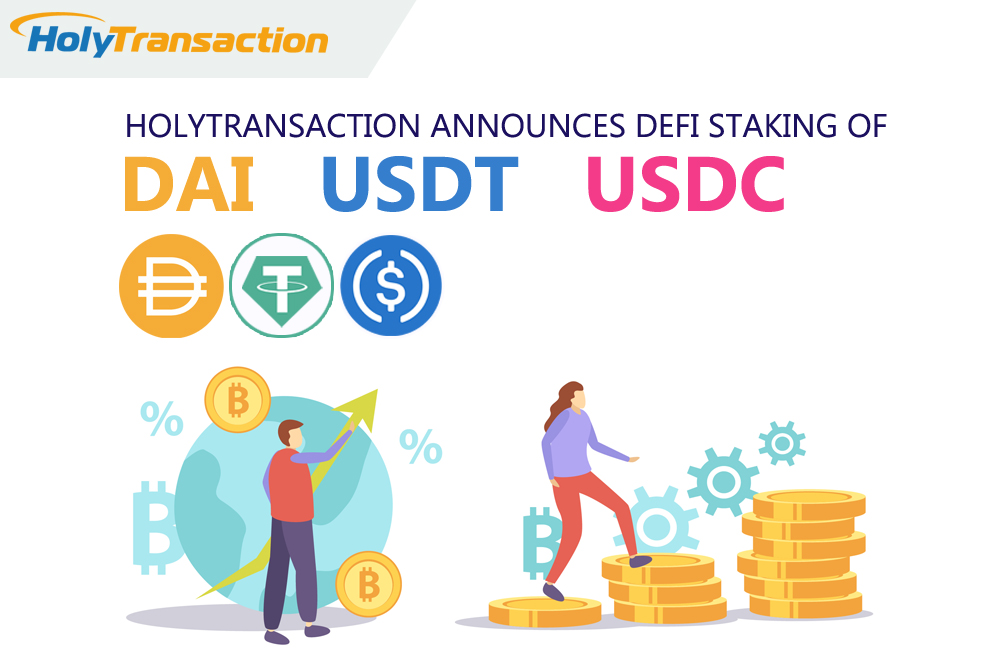

Decentralized finance is quite literally taking the entire blockchain industry by storm.
After a relatively slow buildup over the past few years, the spotlight has well and truly fallen on the cryptocurrency space’s ability to do what traditional finance does — but better.
HolyTransaction, the world’s most trusted cryptocurrency web wallet, is making access to DeFi solutions available to all of its users starting now.
How? HolyTransaction developers have integrated DeFi savings accounts for stablecoins into HolyTransaction web wallets.
If the whole decentralized finance thing is new to you, and you’re having trouble understanding the importance of cryptocurrency savings accounts with stablecoins, then read on!
Blockchain has promised to do a lot over the years.
However, at the end of the day, its first and best use case going back to the invention of Bitcoin is, and has always been, money.
If you’re looking for a one-liner, it’s this:
Cryptocurrencies do it better.
So, why shouldn’t cryptocurrencies one-up the traditional financial industry?
Decentralized finance refers to blockchain-based protocols that enable peer-to-peer financial solutions like loans and, yes, savings accounts. Anything the traditional financial industry offers via institutions like banks, you will soon be doing in a decentralized manner without third parties at all.
The truly clutch tool in the development of the #DeFi industry has been the stablecoin, a workhorse digital asset used to minimize value volatility by pinning a cryptocurrency’s worth to an outside asset.
Some stablecoins, like Tether (USDT), pin their value to government currencies such as the US dollar. To maintain value, $1 is stored in a reserve for every 1 USDT circulating in the open market.
Other stablecoins peg their value to assets like gold, oil, and electricity.
Today, stablecoins are gaining immense popularity as digitally-native alternatives to slow, centralized, and costly to use fiat currencies like the EUR, RUB, USD, and YEN.
When using traditional banking savings account solutions, you’ve probably noticed that APY rates are pretty low.
Even so-called high yield accounts don’t yield much with limits as low as 0.5%.
Decentralized finance is changing that. By removing third parties from banking scenarios, you can often earn as much as 3% APY by keeping your stablecoins in an interest-generating crypto savings account.
The great news is HolyTransaction has integrated such interest-earning features directly into its trusted cryptocurrency web wallets.
With HolyTransaction, there is no need to download, install, or otherwise figure out another piece of software.
Instead, you can use your HolyTransaction cryptocurrency web wallet directly via the web, allowing you to get started generating rewards on your stablecoins right away.
If you’re concerned about a learning curve of some kind — worry not.
Using a DeFi savings account is the same as using a basic cryptocurrency wallet. Just deposit your stablecoins, click on “stake” and you’re good to go — the longer you store them, the more they yield in return.
Want to get started today? Jump over to HolyTransaction to quickly create an account and start saving.
Open your free digital wallet here to store your cryptocurrencies in a safe place.
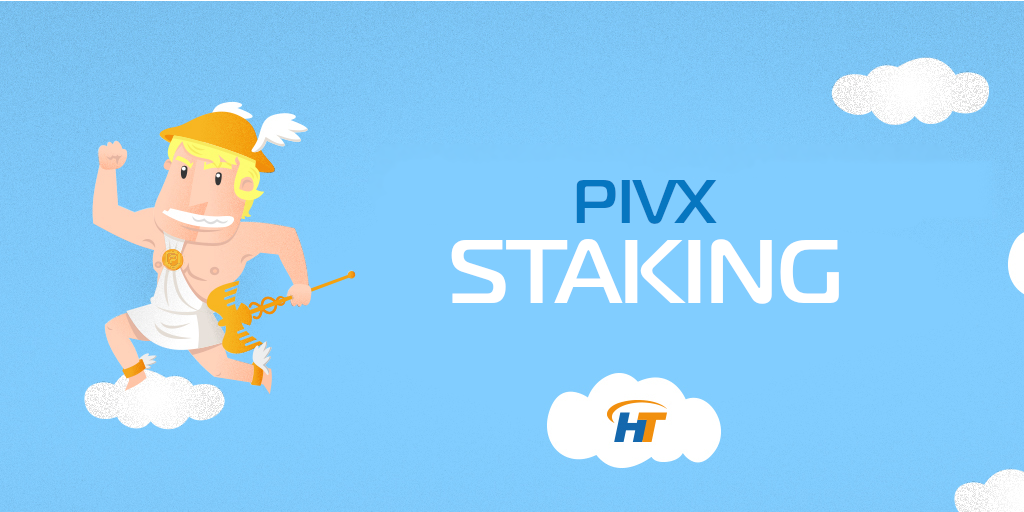

PIVX is a privacy-focused cryptocurrency that stands for “Private Instant Verified Transaction“. It is a fork of another cryptocurrency, Dash. Like Dash, PIVX is also used proof of stake for consensus. This means that there are opportunities for earning PIVX just by owning PIVX. This contribution to the network helps fund the verification of transactions and the creation of new PIVX coins. You can think of this as earning interest on your coin or as a dividend on your investment.
HolyTransaction.com is excited to present to you the launch of our new staking service. You can now leverage Proof of Stake (POS) holdings to safeguard crypto networks while earning financial rewards. Staking PIVX has become much easier with HolyTransaction!
The first step is to register on HolyTransaction.com to get your PIVX web wallet. The official PIVX wallet is available for Windows, macOS, as well as Linux. Android and iOS versions are also available, but these versions do not yet include staking functionality.
After accessing the HolyTransaction wallet, you must wait for your PIVX deposit to reach the minimum number of confirmations for the synchronization to finish. If you move your PIVX in staking before the next rewards distribution is done, your wallet will receive less rewards according to the mininum PIVX held in that time frame.
Once the PIVX address on Holtransaction has received the transaction, you will start staking yourself some PIVX. Your coins must have at least 101 confirmations. These coins are referred to as mintable coins. The number of confirmations on your transaction can be viewed in the history of your account. Once your coins are mintable, you will then be able to stake them and start receiving POS rewards, you can see your rewards in History -> Distributions. Staking can sometimes take as long as 24h to begin once all the prerequisites are met. If staking does not begin after some days, you should wait until you start minting blocks in your wallet.
The more PIVX you stake, the more rewards you get. If you have over 10,000 PIVX, this qualifies you as a masternode. This allows you some say in how the PIVX network operates and also qualifies you to receive additional rewards. Masternodes can earn up to 10% of their stake.
You can stake your coin without being online 24/7, but you will not be eligible for staking rewards while your system is offline. Unlike some other proof of stake coins, PIVX does not consider the age of the coins or the amount of time they have been staked. PIVX only considers is your PIVX balance.
HolyTransaction staking wallet makes it much more user-friendly to stake your POS cryptocurrencies. PIVX has great passive income potential, especially for those who hold over 1000 PIVX, this designation greatly increases the rewards you receive. To begin staking PIVX start by depositing your coins in your HolyTransaction Wallet.
Open your free digital wallet here to store your cryptocurrencies in a safe place.
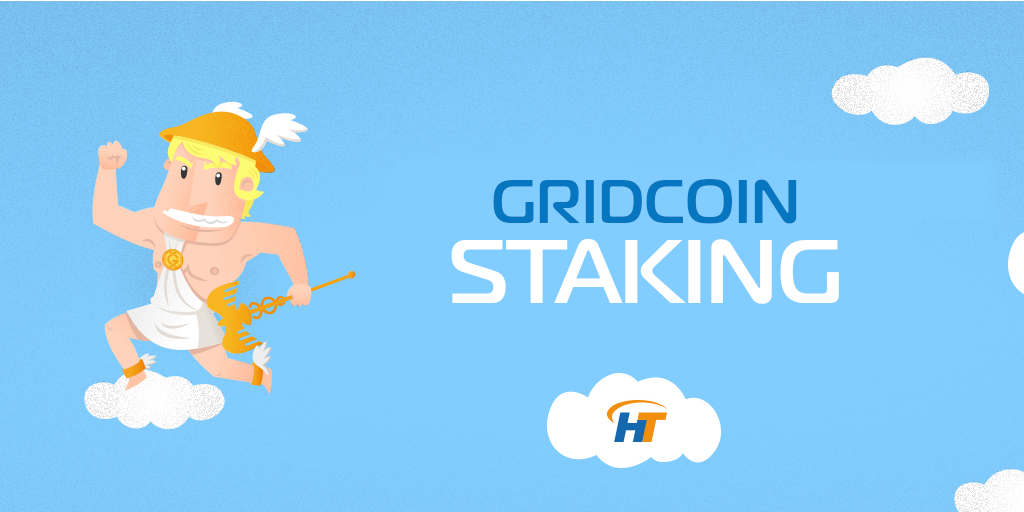

Gridcoin is a cryptocurrency with ambitions of advancing scientific research. It was originally a simple hybrid of proof of work and proof of stake but now has developed its own custom mechanism blending elements of the two. New coins are created using Proof of Stake, but the number of new coins created depends on how much processing power was used for BOINC.
HolyTransaction Wallet is excited to present to you the launch of our new staking service. You can now leverage Proof of Stake (POS) holdings to safeguard crypto networks while earning financial rewards. Staking GRC has become much easier with HolyTransaction!
According to the PoR mechanism, If a node contributing its hash power to a project that has been whitelisted on the Berkeley Open Infrastructure of Network Computing (BOINC), that node will receive GRC coins corresponding proportionally with the amount of the work done by the node. The BOINC list contains projects of scientific importance that require a supercomputer but don’t have access to one. Of these projects, Gridcoin users vote on a subset of them to be whitelisted for contributions of computing power. Gridcoin, therefore, gives people all over the world the ability to contribute computing power to any of these projects and contribute to scientific research. You can also generate income by running Gridcoin in what the Gridcoin project calls “investor-only mode.”
Investor-only mode is what the Gridcoin project calls it when you setup earns proof of stake interest as opposed to the DPOR (proof of research) payments that “crunchers”—those who contribute computing power receive. You will only need to install the Gridcoin client and will not need the BOINC client.
The first step to setting up a Gridcoin client for investor-only mode is to install the Gridcoin Research client. The client is available for Windows, macOS, and several flavors of Linux including Debian, Arch Linux, OpenSUSE, and Fedora. Once the client has been installed, you will want to sync with the Gridcoin blockchain. This can take between several hours to a couple of days, depending on your internet speed. A green check on the connection bar indicates that the synchronization is complete. At that point, you can unlock your wallet for “staking only.” It can take up to 16 hours for the staking to begin. Running the Gridcoin client at all times maximizes your potential for income. Anytime the client is offline, you could miss an opportunity to mint a block.
The higher the balance you have, the higher the chances that you will get to “stake” a block. This is only a result of the fact that a higher balance gives you more chance to mint Pos blocks and thus you get a payout more often. While you can theoretically stake with any number of coins, you can only reliably stake with at least 2000 coins and the Gridcoin project itself recommends at least 5,000. The miners who contribute computing power to these projects come in two varieties—solo and pool. Pool miners earn research rewards whether they stake or not, but solo miners must stake in order to get paid.
Gridcoin provides a way to contribute to important scientific research and earn passive income while doing so. Even those who only stake coins and don’t provide actual computing power to these projects contribute by securing the network and helping the Gridcoin ecosystem. All you need to start staking Gridcoin is to deposit GRC in your HolyTransaction account.
Open your free digital wallet here to store your cryptocurrencies in a safe place.
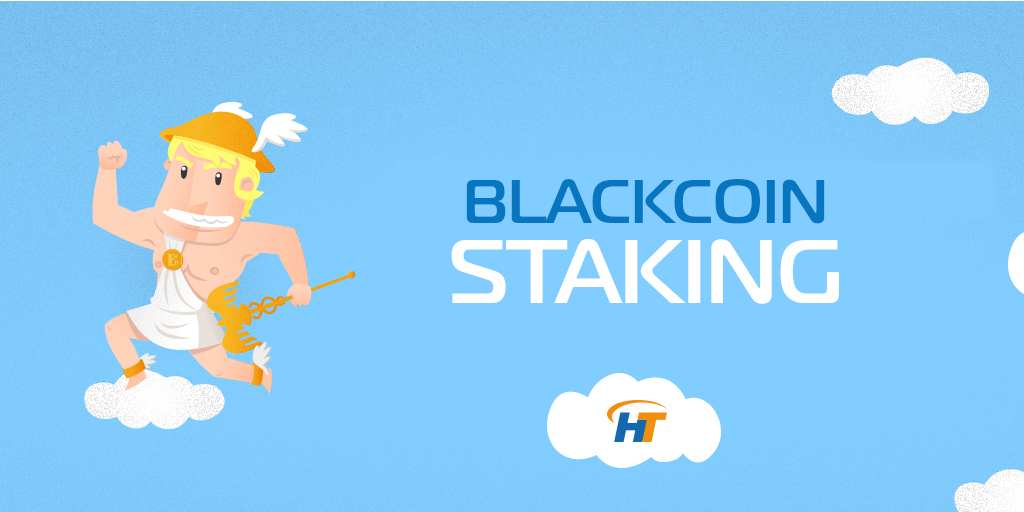

Blackcoin is a proof of stake-based coin. Blackcoin actually started out in life as a proof of work cryptocurrency but became a proof of stake coin after the 10,000th block was mined. Blackcoin claims in its whitepaper that it was the first cryptocurrency to use a pure proof-of-stake-based protocol on Bitcoin code. Blackcoin provides many of the same features as other cryptocurrencies, including decentralization and a high degree of transparency. It also offers great opportunities for passive income for staking your coins.
HolyTransaction Wallet is excited to present to you the launch of our new staking service. You can now leverage Proof of Stake (POS) holdings to safeguard crypto networks while earning financial rewards. Staking BLK has become much easier with HolyTransaction!
The process of staking is initiated by not moving your BLK for at least a period of 8 hours while keeping your node syncronized with the Blackcoin network. Your earnings are proportional to the number of coins that you have—the more coins you have, the more you earn. The amount of time you keep your wallet open for staking also has an effect on your block rewards.
Blackcoin has improved its block time from 60 to 64 seconds. Blackcoin had previously used the scrypt protocol for its hashing algorithm, but this was changed to SHA256d. Blackcoin’s reliance on proof of stake gives it an edge in performance over many proof of work cryptocurrencies. When it comes to retail applications, where transactions cannot take an hour to fully confirm as with Bitcoin, proof of stake cryptocurrencies like Blackcoin are better suited for this role.
Staking your Blackcoin will earn you a reward of between 1% and 8% of the total amount of coins held in your wallet for one year. You just need to deposit BLK in your HolyTransaction account. Wait for 24h to start staking Blackcoin and visit History -> Distributions to see your POS rewards.
Open your free digital wallet here to store your cryptocurrencies in a safe place.